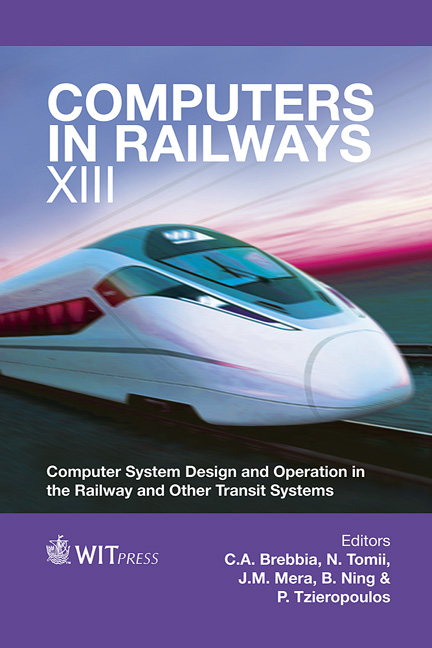Enhancing Timetable Planning With Stochastic Dwell Time Modelling
Price
Free (open access)
Transaction
Volume
127
Pages
11
Page Range
461 - 471
Published
2012
Size
2,765 kb
Paper DOI
10.2495/CR120391
Copyright
WIT Press
Author(s)
G. Longo & G. Medeossi
Abstract
Estimating stop time is a critical task for timetable planning, especially since actual dwell time shows a significant variability that could hinder service reliability. Therefore its importance has increased as railways seek to maximize infrastructure utilization while improving the quality standards, including reliability. A significant amount of scientific work focussing on the estimation of dwell time within different transit systems can be found in literature. However, it is mostly focused on aspects such as, for example, the time required for each passenger to board depending on the number of steps, while in very few reports the applicability of the models and their practical relevance are described. This study presents an approach for estimating the stop time distribution of train services and using them in simulation or timetable planning tools. Based on conventional parameters on the one hand and on track occupancy data collected by train describers on the other, the models include an algorithm to derive the stop time from the track occupancy data and a multi-parametric dwell time estimation. When past track occupancy data is available, the parameters are estimated: the calibrated model can be used as input to plan or simulate future scenarios considering, for example, new rolling stock or different service patterns. The results of model calibration and its use in a test network around Venice are described in the last part of the paper. Keywords: stochastic simulation, railway planning, dwell time, train performance.
Keywords
stochastic simulation, railway planning, dwell time, train performance





